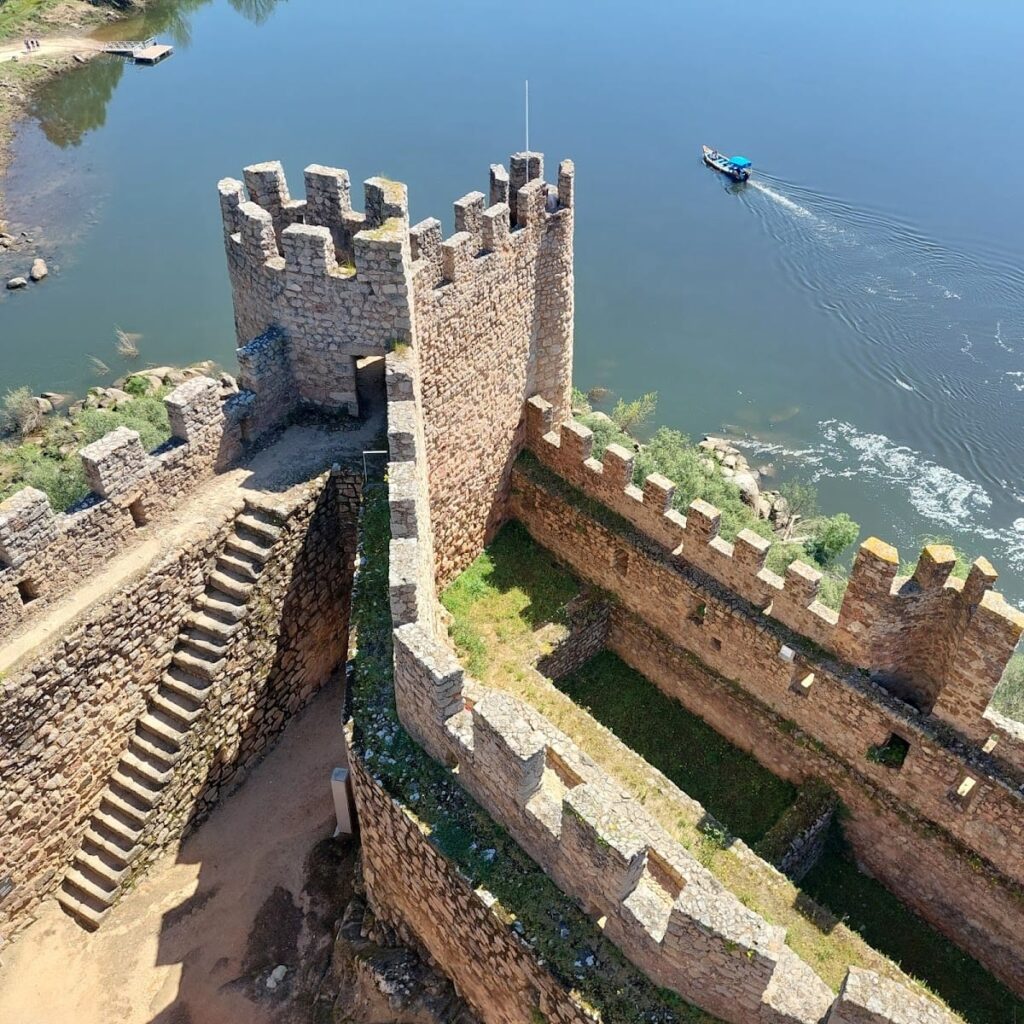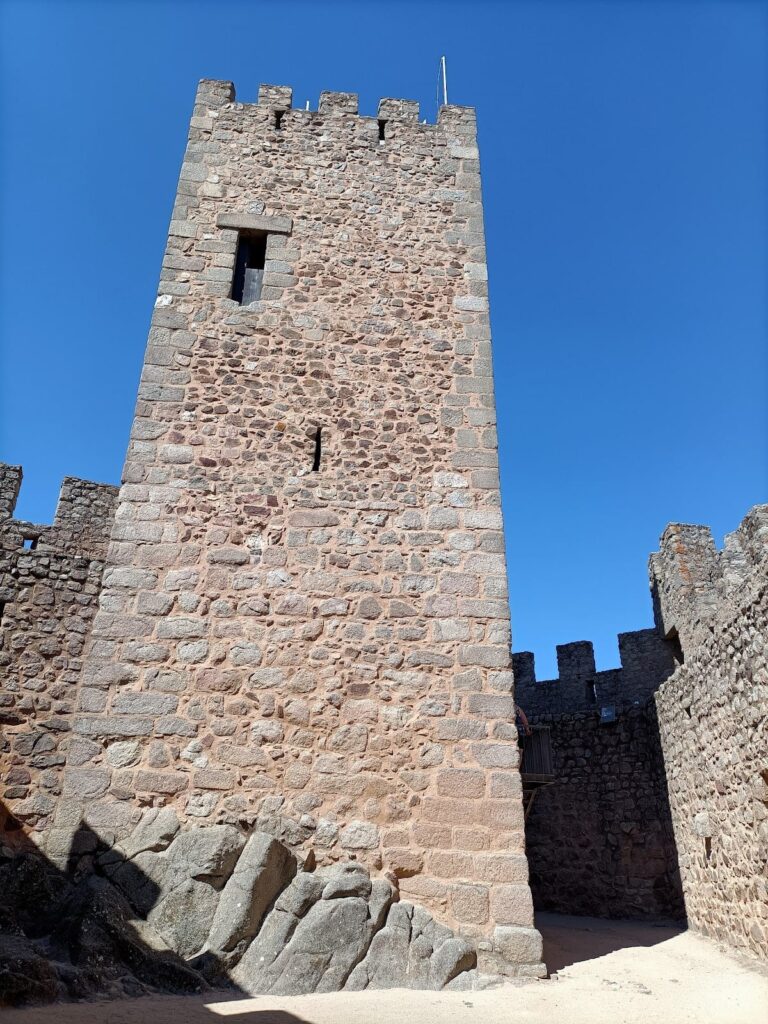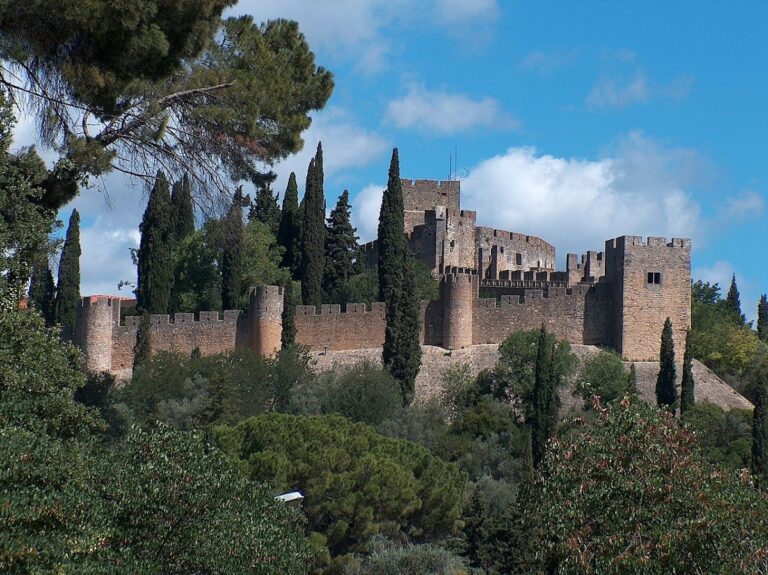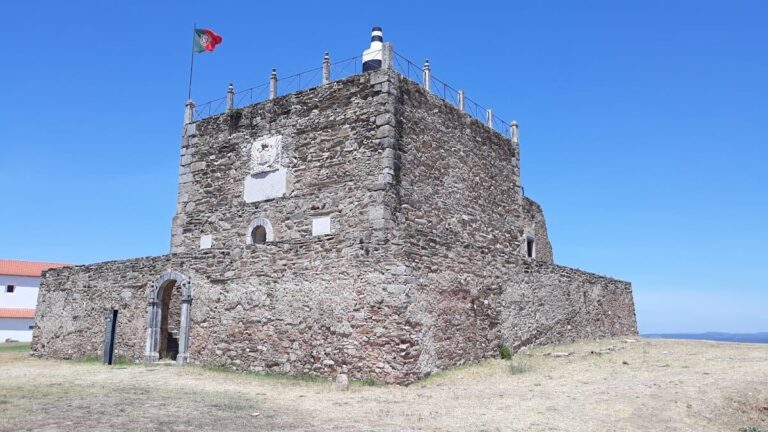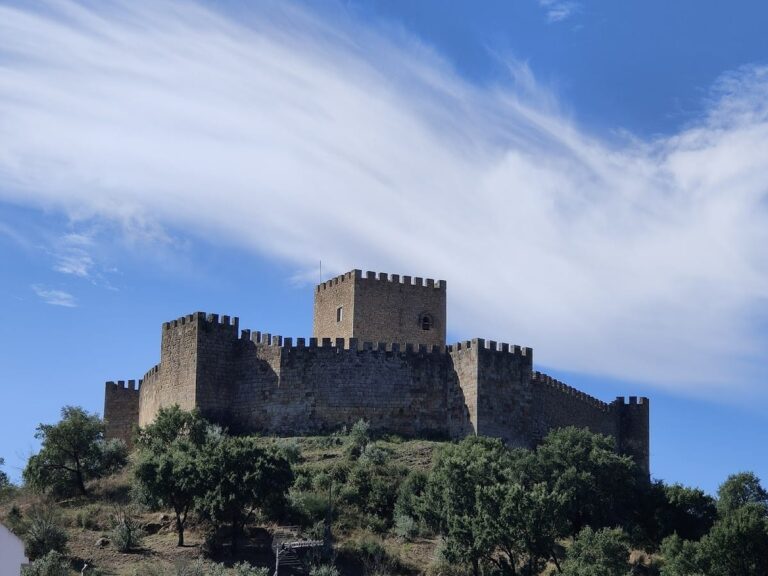Castle of Almourol: A Historic Fortress on the Tagus River in Portugal
Visitor Information
Google Rating: 4.6
Popularity: High
Google Maps: View on Google Maps
Official Website: welcome-to.pt
Country: Portugal
Civilization: Medieval European
Remains: Military
History
The Castle of Almourol stands on a small granite island in the Tagus River near Vila Nova da Barquinha, Portugal. Archaeological finds show the site was occupied since prehistoric times. Roman coins from the 1st century BCE and medieval artifacts reveal continuous human presence. The island was successively inhabited by the Alans, Visigoths, and from the 8th century, by Muslim groups.
In 1129, King Afonso Henriques captured the castle during the Christian Reconquista. He entrusted it to the Knights Templar, a military religious order. Gualdim Pais, a prominent Templar leader, began rebuilding the fortress in 1171. This is confirmed by an inscription above the main gate crediting him with Almourol’s construction and other castles. The castle became a key military and administrative center, controlling trade along the Tagus River. It also formed part of a Templar commandery and received a charter for its inhabitants in 1170, indicating a nearby settlement.
Following the suppression of the Knights Templar in 1311, the castle was transferred to the Order of Christ, which inherited many Templar properties in Portugal. Over time, Almourol’s military role diminished. It suffered damage during the 1755 earthquake, which affected much of Portugal.
In the 19th century, the castle underwent restorations inspired by romantic ideals, including decorative battlements. During the Estado Novo regime in the mid-20th century, it was adapted as an official residence of the Portuguese Republic. The Portuguese Army assumed responsibility for the site in the late 1800s and has overseen ongoing conservation efforts. In 2013, a project was launched to create a museum space within the keep tower. Since 1910, the castle has been classified as a National Monument of Portugal.
Remains
The Castle of Almourol occupies an irregular rectangular area on a granite outcrop rising 18 meters above the Tagus River. The fortress measures about 310 meters in length and 75 meters in width, shaped by the uneven terrain of the island. It is built mainly of granite blocks held together with mortar.
The castle is divided into two main levels. The lower exterior courtyard features nine tall circular towers, with four on the west side and five on the east. This level includes the main entrance and a smaller postern gate called the “porta da traição” or “gate of betrayal.” Remains of a well are also found here.
The upper level contains the keep tower, a square, three-story structure dating from the 12th century. Original stone corbels support wooden beams inside. A carved Templar cross, known as a cross pattée, is visible above an east-facing window. The curtain walls are topped with battlements and narrow arrow slits. Stone stairways provide access to the battlements and the walkway along the walls, called the chemin de ronde. Multiple stone doorways connect different parts of the castle internally.
Two inscriptions are present on the site. One is above the main gate, dated 1171, which credits Gualdim Pais with building Almourol and other Templar castles. Another inscription inside the castle also attributes its construction to him. The castle’s irregular towers and keep reflect architectural innovations introduced by the Templars in western Iberia during the 12th century.
Restoration work in the 20th century included reinforcing the keep with concrete, rebuilding doors and walls, and improving paving and access routes on the island. Pathways surround the castle, allowing visitors to walk around the structure and view the river and landscape. The castle remains largely restored and preserved in situ.



